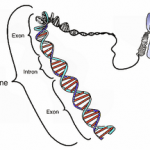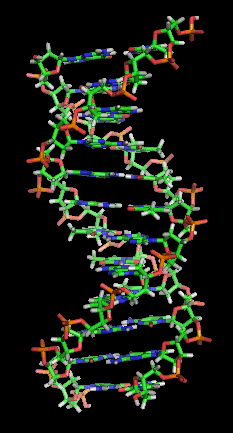Whole Genome Sequencing: Mutation Diagnosis of the Future!?
 Two Scientific teams independently attempted a new approach to discovering the cause for certain diseases by sequencing the whole genome of their patients. This technique was done not only to help their current patients but hopefully to shed light on other common killers such as heart disease, diabetes and Alzheimer’s.
Two Scientific teams independently attempted a new approach to discovering the cause for certain diseases by sequencing the whole genome of their patients. This technique was done not only to help their current patients but hopefully to shed light on other common killers such as heart disease, diabetes and Alzheimer’s.
One Scientist from Baylor College of Medicine in Houston Texas, Richard A. Gibbs, decided to test whole genome sequencing on his colleague, a medical geneticist, Dr. James R. Lupski, who suffers from a rare genetic disorder known as Charcot-Marie-Tooth Neuropathy (this disease damages nerves to the hands and feet and causes muscle weakness). As it turns out, this disease is caused by a single mutation in any of 39 genes. Dr. Lupski’s mutation turned out to be in a gene called SH3TC2. He inherited the mutated variant from both parents; however, the mutations were in different sites within the gene in each parent. His father had an error on one site, his mother in another. These mutations were also passed on to three of his seven siblings.
The second team, run by Leroy Hood and David J. Galas at the Institute for Systems Biology in Seattle WA, also decided to use Whole Genome Sequencing. They sequenced the genomes of a family of four, where two children each inherited rare, single gene diseases known as Miller Syndrome (this can cause malformation of facial features and limb development, but does not affect intelligence) and ciliary dyskinesia (this impairs the development of cilia in the respiratory tract and the fallopian tubes, which can lead to difficulties expelling mucus). The completed sequencing allowed the researchers to identify the genes causing these diseases.
Today, the cost of sequencing an entire genome has gone down quite a bit, from approximately $500 million to about $50,000. This technique has also allowed the Seattle scientists to estimate the number of mutations passed from mother to child, which turned out to be less than expected.
There are many diseases that are caused by a single, rare mutation in a gene. However, common diseases, such as cancer, may have mutations in many genes. This is what prompted the beginning of the Human Genome Project in 1987 at the cost of about $3 billion dollars.
After the project’s completion in 2003, scientists created a $100 million project called HapMap, which identified common mutations among human populations. This was meant to be a “short cut” to finding disease causing genes. As it turned out, about 2000 of these sites were linked to assorted diseases, but many more did not appear in working genes, implying that HapMap was somehow missing some of the connections between these mutations and diseases among individuals. Too much money was being spent, but not enough answers were being found.
Now some scientists lean toward the belief that common diseases do not have common mutations, but actually have rare mutations in multiple sites. Whole genome sequencing seems to be the “way to go” for gene and mutation analysis of diseases. The price for this type of sequencing is dropping as technology advances. In the near future, sequencing companies are hoping to get the price down to a $5000 genome.
Information for this blog was taken from: http://www.nytimes.com/2010/03/11/health/research/11gene.html?hp
| Print article | This entry was posted by Elna Carrasco on March 19, 2010 at 4:49 pm, and is filed under DNA Interactive. Follow any responses to this post through RSS 2.0. You can skip to the end and leave a response. Pinging is currently not allowed. |
